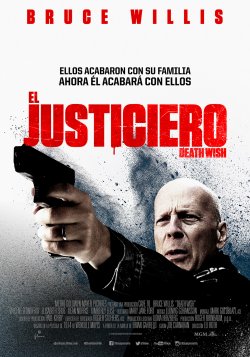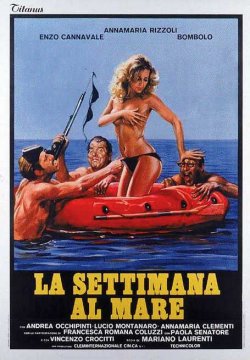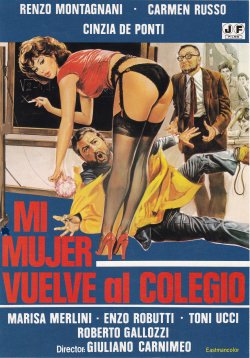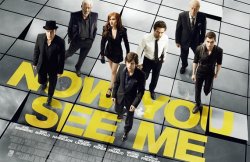 |
|
SINOPSIS
Un eficiente padre de familia se convierte en una máquina de matar tras sufrir su familia un acto de violencia...
INTÉRPRETES
BRUCE WILLIS, VINCENT D'ONOFRIO, ELISABETH SHUE, JACK KESY, DEAN NORRIS, BEAU KNAPP, KIRBY BLISS BLANTON, MIKE EPPS, LEN CARIOU, KIMBERLY ELISE, RONNIE GENE BLEVINS, IAN MATTHEWS, CAMILA MORRONE, NATHALY THIBAULT, CHRISTOPHER TYSON
MÁS INFORMACIÓN DE INTERÉS
![]() CÓMO SE HIZO
CÓMO SE HIZO
![]() AUDIOS
AUDIOS
![]() PREMIERE
PREMIERE
![]() SECUELAS, REMAKE El justiciero de la ciudad (1974) / Yo soy la justicia (1981)
SECUELAS, REMAKE El justiciero de la ciudad (1974) / Yo soy la justicia (1981)
El justiciero de la noche (1985) / Yo soy la justicia 2 (1987)
 INFORMACIÓN EXCLUSIVA
INFORMACIÓN EXCLUSIVA
INTRODUCTION...
Fury and fate are fickle, dangerous partners. We can’t predict their arrival, and we can never know how far from – or how close to – our true selves they’ll take us. Dr. Paul Kersey (Bruce Willis) becomes inextricably linked with both fury and fate before he discovers exactly who and what he is: a man seeking justice working outside the law.
That stark, dramatic premise propels Eli Roth’s action-filled reimagination of Death Wish into a new era, with themes of crime, punishment, and the power to fight back at the forefront of the narrative.
The story was first told in Brian Garfield’s 1972 novel of the same name, and then in director Michael Winner’s 1974 landmark action drama, starring Charles Bronson and adapted by Oscar nominee Wendell Mayes. For the 2018 adaption, screenwriter Joe Carnahan (writer-director of Narc, Smokin’ Aces, The Grey) and director Eli Roth (Hostel, Hostel: Part II, The Green Inferno) teamed up with Bruce Willis, one of cinema’s most important and genre-expanding action stars, to look at Death Wish with fresh eyes.
“We dug in deep to crack the story and see how we could tell a story that was relatable to audiences today,” says producer Roger Birnbaum, who put this new version of Death Wish together with associate producer Stephen J. Eads and executive producer Ilona Herzberg. “We knew we couldn’t tell the same story as in the early ’70s. So much is different in our country right now. Paul Kersey is pushed to violence by his frustrations about the lack of resources that the police department have. Only when a clue actually lands in his lap does he decide to go after the criminals who attacked his family.”
Says Roth, “People have fantasies about cleaning up the streets, taking care of crime, and being a crime fighter. That’s one of the reasons superhero movies are so popular. It’s that idea that ordinary people have the power to stop crime and fight evil.”
INSIDE A THRILLER: REVENGE, DUALITY, AND SOCIAL MEDIA...
Dr. Paul Kersey (Bruce Willis) has it all: A beautiful family, a lovely home and an exciting and meaningful career as a surgeon in the emergency room of a bustling hospital. But when Kersey’s wife Lucy (Elisabeth Shue) is killed during a robbery attempt at their home and his daughter Jordan (Camila Morrone) is left in a coma after fighting back against the three attackers, he enters a world he never planned for.
Emotionally shut down, Kersey leans on his brother Frank (Vincent D’Onofrio) for help, and on Detectives Raines and Jackson (Dean Norris and Kimberly Elise) for any updates on the arrests of the men who did this to his family. As the police show Kersey a wall of unsolved cases and become resigned to the fact that his case will also go unsolved, something clicks in Kersey, a man who, as his brother Frank reminds him, used to be known for fighting back in the tough neighborhood they grew up in.
Walking into a local gun shop, Kersey decides to arm himself. But his role in the world is saving lives, not taking them. No matter who is wheeled into his emergency room, to Kersey, they’re all patients in need of attention. How could he seek justice on such harsh terms? Yet as Kersey ventures into the night, he finds innocent people being preyed upon. When he foils a violent carjacking and a bystander’s cellphone footage of it goes viral, the media gives this unknown guardian angel a dark nickname: “The Grim Reaper.” As Paul Kersey gets closer to Knox (Beau Knapp) – the criminal who killed his wife – the city, unaware of this mysterious justice-seeker’s motives, wonders how it will end. “Paul Kersey isn’t experienced with firearms of any sort – he’s a doctor who spent his life trying to save lives,” says Birnbaum, whose long list of credits goes back over 30 years and include dramas (Washington Square, Seabiscuit, Invictus), comedies (The Sure Thing, Grosse Point Blank, Rush Hour), and actioners (Unbreakable, Wanted, Robocop (2014), The Magnificent Seven (2016)). “When Kersey first goes into the streets to find out who did this to his family, it doesn’t go smoothly.”
“Paul Kersey takes on an alternate identity,” says director Eli Roth. “By day, Kersey is a surgeon. At night, he goes out into the streets, becoming known as the Grim Reaper.”
The duality isn’t an instant fit: Kersey’s first act as a morally ambiguous, stealth Samaritan is spontaneous. When he sees the men carjacking a couple, he reacts. As the car speeds away, he takes aim and almost impulsively shoots at it. “But the perpetrators aren’t dead,” says Roth. “They get out and start shooting at him, and he has to fire back. It’s this moment of pure animal adrenaline.”
“I wanted a moment of transformation, where Kersey realizes he could save a bad guy – that’s what he does every day – but he makes the choice not to,” says Roth. “We see Kersey move his own moral goal posts. He’s a normal guy who’s ethical and moral, and he keeps pushing the line further in order to justify his own actions.”
Willis, whose performances have always contained a deep and layered understanding of his characters and the times they live in, saw Paul Kersey as a man who laid down, and followed, his own preordained path.
“I truly believe, on a deep level, that everything happens exactly the way it’s supposed to in life,” says Willis. “Approaching this film, I thought it’s clear that this character was on the path he was supposed to be on. To be a doctor, as Paul Kersey is, you have to want to help people. And then, though it came from a tragedy, after his family is attacked, Kersey gets to where he is because he’s supposed to be there -- one way or the other. And all of that was there in the script.”
Shue explains an early moment where her character, Lucy, gets a glimpse into the aggression her husband keeps a lid on. “There’s a scene where Paul and Lucy are watching their daughter Jordan play soccer, and there’s a belligerent man in the crowd who isn’t happy with what’s taking place on the field,” says Shue. “This guy gets angry and starts yelling, and Paul confronts him and says, ‘You need to calm down.’ They get into a tense moment where you see who Paul Kersey could become if he’s pushed too far. There’s a part of himself that he needs to control.”
Production Designer Paul Kirby’s job was to help put this inner metamorphosis into visual terms. “Paul Kersey has a good job and has his life and family environment in order,” says Kirby. “He’s done the right things. Then he unravels, and circumstances take him on a journey to another place.”
“He goes nuts,” D’Onofrio says bluntly about Paul Kersey, who is the brother of D’Onfrio’s character, the bear-like, protective Frank Kersey. “There’s only one way back for Paul, and that’s to regain his sanity. It’s a genre film, and there’s this murky element to it that will raise questions. But you have to go into the deeper aspect of it, and think about whether or not what Paul’s doing is right.”
Willis views Paul Kersey’s transformation through the prism of parenthood, something the father of five understands well.
“Before I had kids, [being a father] wasn’t a part of these action films I do,” says Willis. “Now, it’s a major component. This film really makes you think about how far you will go to protect your family. After his own family is brutalized, Paul Kersey has zero tolerance for any bad guy to harm another innocent person. And we show the audience the underlying reasons why he does what he does.”
Knapp (The Nice Guys, Billy Lynn’s Long Halftime Walk, TV’s Shots Fired, Seven Seconds) says that creating a memorable villain for Paul Kersey to go up against was crucial to the film.
“A key part of playing a villain is not seeing yourself in the mirror as a villain,” says Knapp of playing Knox, the thief and murderer who alters Kersey’s life. “But for Knox, it’s different. He looks in the mirror and this guy likes how bad he is.”
Knapp discussed the role in depth with Roth immediately after being cast. “Coming right off the page, the villainy in Knox is almost automatic, in his mannerisms or in the way he walks or talks or grins,” says Knapp. “Eli and I wanted to make a great character, like the kinds there were in the movies of the 1970s and ’80s, where they’re really standout evil dudes.”
Social media and technology provide an added layer to this modern version of Death Wish that heightens the immediacy of Kersey’s killings. With that current, contemporary element involved, it’s easy to see how the actions of the Grim Reaper could begin to rocket out of Kersey’s control.
“The carjacking goes viral because it turns out someone is filming it from a window,” explains Roth. “The video goes everywhere. Everyone can see this guy doing this. One interesting aspect of doing Death Wish today is that we really could show how these things go viral and everyone would instantly experience the moment pretty much as it’s happening.”
Morrone agrees with Roth that social media has changed how the world would view events like the ones in Death Wish. “The idea of a bystander recording the carjacking and uploading it really resonated with me,” says Morrone. “I grew up in the generation of social media, where everything is just a click away. That truly is the reality of my generation. We all now find things out through social media before we see it on the news.”
“Years ago, when something happened that was newsworthy, you had to wait to hear about it by reading the newspapers the next morning or by turning on the local evening news,” says Birnbaum. “But now, with social media so prevalent, it’s instantaneous. You have eyewitnesses to everything. That’s what happens in our story, and then there’s an enormous, extra amount of pressure brought to bear on the police to solve this crime.”
Norris says the impact of social media serves as a central motivator for the police to catch Kersey’s alter-ego. “We incorporate this new reality, and the fame and infamy it can bring,” says Norris. “The notoriety of the Grim Reaper gets spread via social media, which causes the detectives’ superiors to come down on us and say, ‘You need to catch this guy and put an end to this because it’ll start copycat killings.’ It becomes part of the motivating factor for the police to make sure they catch the Grim Reaper.”
“It does create a hindrance to Raines and Jackson because it causes the Grim Reaper situation, which would have been simply within the police department, to go public much faster,” adds Elise. “Before the detectives can even get back to the precinct, everyone knows what’s going on.”
BRUCE WILLIS: CENTER OF THE ACTION...
With Death Wish, star Bruce Willis continues to expand upon the multifaceted persona that’s made such an indelible mark on American movies. “Working with Bruce has always been something I’ve wanted to do,” says Shue. “I’ve watched a lot of his films over the years and have a lot of respect for him as an actor. I knew that he’d be really great to work with. Bruce is such a compelling actor, and has so much charisma and power on screen.”
As an action star, Willis has owned the genre since he introduced the resourceful, tough and smart-ass Detective John McClane to audiences with Die Hard. He brought the immensely popular character back for Die Hard 2, Die Hard with a Vengeance, Live Free or Die Hard and A Good Day to Die Hard. Amongst those, Willis also served up numerous complex character roles in films including Pulp Fiction, In Country, Nobody’s Fool, The Siege, The Sixth Sense and Unbreakable; celebrated comedic turns in Blind Date, The Whole Nine Yards and The Whole Ten Yards, among others; and even more action thrills, including The Last Boy Scout, Twelve Monkeys, The Fifth Element, Armageddon, Sin City, 16 Blocks, Looper, RED, and being part of the hit Expendables franchise.
In addition to all of that is Willis’ commitment to giving a wide variety of independent films a high-profile boost by taking on unique, quirky roles, including in Alan Rudolph’s Breakfast of Champions, Nick Cassavetes’ Alpha Dog, and Wes Anderson’s Moonrise Kingdom, among others.
“I’ve known Bruce a long time,” says D’Onofrio. “We did a film together before, Fire With Fire. We also knew each other a little bit when we were younger. He’s a great guy, great to work with, and very professional. He is always doing what he’s doing – he’s Bruce Willis!”
“Bruce is a perfect choice to play Paul Kersey for a lot of reasons,” says Birnbaum. “I’ve had experience working with Bruce back to The Sixth Sense. He has the skills here to play the arc of a man who starts off as a doctor and is pushed to the darker side of his soul.”
“He’s one of my favorite actors,” says Knapp. “I grew up watching Pulp Fiction. I listened in awe on set to every line and how he speaks. I just tried to watch and learn.”
“Finding out I was going to be working with Bruce was incredible,” says Morrone. Adds Norris, “A lot of things appealed to me about this project. Certainly, Eli Roth was one of them, and it was extremely cool to work with Bruce.”
“Bruce brings his own energy and uniqueness to the character of Paul Kersey,” says Elise, who notes that she was excited to be part of the film in every sense, “and then when you add Bruce Willis to the equation, I saw an amazing experience that I couldn’t say no to.”
For his part, Willis appreciates the different aspects of Paul Kersey, and the complexity of Death Wish.
“You don’t want to trade on tragedy with a character like this,” says Willis. “I like doing all sorts of different movies, and you have to know where the right character traits should go. You have to make your choices, and go with it. There’s a stillness to Paul Kersey through much of this film that I tried to exemplify.”
ELI ROTH CAPTURES THE HEAT OF THE MOMENT...
Few filmmakers have burst upon cinema’s genre consciousness like Eli Roth. When the Boston native made his first feature, 2002’s Cabin Fever, it was an homage-filled nod to classic horror thrillers with a postmodern pulse. Working from his own script and also serving as a producer on the film, Roth would go on to spark a unique career.
Three years later, Roth combined his twisted sense of style with his sly, sinister sense of terror to create Hostel. Practically spawning a genre of its own, the movie would have a sequel (also helmed by Roth) and become the kind of one-word-shorthand that guaranteed its status as a crucial demarcation in the gross-out universe of scary moviedom.
Roth then spent time enjoying tweaking the persona he’d built. He wrote and appeared in a spoof movie trailer (“Thanksgiving”) in Quentin Tarantino and Robert Rodriguez’s “retro double feature” Grindhouse, and costarred as “The Jew Bear” in Tarantino’s Oscar-nominated Inglourious Basterds. As a producer, he nurtured a new generation of genre filmmakers and fans with movies including 2001 Maniacs, The Last Exorcism, The Sacrament, and Clown, among others. As an actor, he popped up in the film adaptation of Broadway’s Rock of Ages, as well as in small roles in Piranha 3D, Aftershock and The Man with The Iron Fists. He followed that up with directing the cannibals-in-the-Amazon psych-out, The Green Inferno, and the psychosexual horror Knock Knock, starring Keanu Reeves.
D’Onofrio, a genre-jumper himself and a true journeyman actor, says he loved working with Roth. “Eli knows exactly what he’s doing, and he comes in very prepared,” D’Onofrio says. “He’s got his own style. Eli is full of ideas, he comes over after every take and gives his opinion and tries to guide you in the right direction. It’s a pleasure to work with him.”
“Eli is a perfect director for Death Wish,” says Birnbaum. “With the Hostel films, you saw a young filmmaker learning his craft. He’s acted in Inglourious Basterds. He has many skill sets: he’s great with actors, he’s a writer, he’s really good with a story. He’s just the perfect guy for this.”
“Eli is such a contemporary and unique director that he puts a whole different spin on Death Wish,” says Elise. “He loves film. If you stop and pause him for even a moment, he’ll start talking about films. That’s so important, to have a love of your craft. He’s also an actor’s director – he has such a focus and commitment to performance that he comes in, and takes it to the next level. He gave Dean and I lots of freedom to create our characters.”
“He’s one of the best directors I’ve ever worked with,” says Knapp. “I thought of Knox sort of like a young Frank Booth, Dennis Hopper’s character, from Blue Velvet. It’s great how Eli encouraged his actors to create these characters from scratch.”
FAMILY FIRST, ONSCREEN AND ON-SET...
Establishing a rapport, whether on the set between actors or with audiences connecting to onscreen characters, was a crucial element of Death Wish.
“Because this is a story about a family, audiences need to get to know the family as quickly as possible, so we came up with little nuances that make them seem real, just like a family,” says Shue.
The same feelings of closeness were felt by the cast and crew behind the scenes.
Birnbaum says he was overjoyed Shue took the role of Lucy Kersey. “Elisabeth in this movie is a real coup for us,” says the producer. “We’re all such fans of hers. She’s a terrific actress, we loved having the opportunity to work with her.”
Morrone feels equally warmly about Shue. “Elisabeth is great,” says Morrone. “When I found out that she was playing my mom I sent her an email saying, ‘I’m playing your daughter in Death Wish and I really want to meet you and start to get to know each other!’ We ended up meeting for lunch and sat there for two hours. We just had great chemistry instantly.”
Says Shue of Morrone, “She really is special. This is her first film, and it reminds all of us to remember how exciting it was when we first started out. To see that enthusiasm and excitement in her made us equally as excited to work. She has a beautiful spirit, and has so much talent.”
As for Frank Kersey – Paul Kersey’s brother and, as a stabilizing force, an additional connecting point for audiences – there’s a lot there, says the actor who plays him.
“Frank is a bit of a moral compass in Death Wish,” says D’Onofrio about his character. “He’s paid his debts to society, he had a troubled, dodgy background, he was a petty criminal and went to prison for a little while, but he’s changed since he was a young man. Frank is there in this story to help even things out in a moral way.”
D’Onofrio says he looked forward to working with Shue again. “Elisabeth and I did a film called Adventures in Babysitting many years ago,” says D’Onofrio. “It was almost 30 years ago or something crazy like that. It was my third film. I did Full Metal Jacket, Mystic Pizza, and then Adventures in Babysitting. And I think it was Elisabeth’s first starring role. I never forgot her. On the first day on this set, I went over to her and we gave each other a big hug.”
Frank Kersey is Jordan’s uncle, and D’Onofrio says he was impressed by newcomer Morrone.
“Frank sees Jordan almost as his daughter, too,” says D’Onofrio. “He doesn’t have any kids, so she’s very precious to him. Camila is a wonderful girl and easy to feel affectionate toward. She’s very funny and outgoing and very smart.”
Knapp agrees. “Camila is very easy to work with,” says the actor. “For this being her first film, she’s fantastic. She brings a lot of enthusiasm and positive energy to set, and that’s what you need when you’re creating something.”
COPS ON THE CASE...
Paul Kersey is a man driven by revenge, trying to restore justice to the world as he sees it. But to Detectives Raines (Dean Norris) and Jackson (Kimberly Elise), the officers who investigate the household break-in, and who then are drawn into the hunt for the Grim Reaper, the Kersey case and the Reaper case are two strands in a city under siege. Raines and Jackson are determined to bring peace to the emotionally wounded husband and father and arrest the justice-seeker – without knowing they are one and the same.
“Detective Raines is a longtime detective on the police force,” says Norris. “He loves his job, but he’s overwhelmed with too much crime in the city and not enough money to combat it. Raines tries his best but he also realizes that there’s only so much he can do.”
“Detective Jackson comes from a family of police officers and detectives, and she has a great comfort in this environment,” says Elise. “When she’s teamed up with Detective Raines, it’s a natural fit and a very comfortable place to be for her.”
The easy professional friendship the two detectives have complements their different backgrounds, and the lighter moments they share helps them deal with a statistic-strewn urban landscape that threatens to overwhelm the police department.
“The dynamic between Raines and his partner Detective Jackson is an awesome one,” continues Norris. “Eli Roth wanted to bring a bit of lightheartedness. They’re partners who’ve been around together for a while. Part of the way they deal with the stress and horridness of all the crime they have to deal with is joking around with each other. They have a good working relationship.”
“Jackson and Raines are a Frick-and-Frack detective team,” adds Elise. “We’re really smart and intense but we also have a great rapport. A bit of levity between each other is their way of diffusing the stress, intensity, and frustration of police work. They bring another perspective and a different energy.”
Birnbaum says that it was the cast as an ensemble, further represented by Norris and Elise, that makes the movie work so well.
“Dean Norris was a hopeful idea of ours, that we could get this really good actor to come in and help us create this story,” says Birnbaum. “We wanted to have a unique partnership of these two detectives, and Kimberly Elise playing Dean’s partner was going to add a lot of chemistry. I can’t say enough about this incredible ensemble cast. They really elevate this movie.”
DESIGNING “DEATH WISH”...
For the filmmakers, making the world of Death Wish seem real – from its suburban soccer fields to the hidden corners of the Kerseys’ home to the bustling hospital where Paul Kersey works, to the grungy garages and hidden-away bars – involved getting inside its main character’s psyche. Production designer Paul Kirby (Jason Bourne, Kingsman: The Secret Service, Captain Phillips) says finding the right path began with the script, and then making sure every detail felt right.
“Some films are very designed, like a historical epic or a science-fiction or fantasy film, where it’s obvious you’re portraying something that doesn’t exist,” says Kirby. “It isn’t enough for a designer to say, ‘This is what the film looks like.’ There are different story arcs here, aesthetically.”
“In Death Wish, it’s all about the contrasts that reveal facets of Paul Kersey’s life,” continues Kirby. “At the beginning, his house and the hospital are Kersey’s safe places. They look and feel all-American. So those places visually and tonally are very similar. Then there are parts of the hospital that develop differently as the story goes on, little subtle things that are pulling an emotional value out of the sets. Kersey works in the ER and he’s comfortable there, but in the intensive care unit, there’s a sense of foreboding and impending death. As Kersey gets out of his comfort zone and goes to places he wouldn’t normally go to, visually things get increasingly textural, and the composition becomes more unraveled, and we see hidden doorways and dark places.”
“After Paul Kersey’s wife is killed and he’s told his daughter has gone into a coma, he goes down into the basement of his house,” explains Roth. “I thought that was a nice metaphor for where he is psychologically. This is where Kersey would go to in the house. If you were a doctor, a respected member of society presenting to the world as if everything was fine but at night you were going out and killing criminals, you’d be plotting and planning down in the basement. So the basement sort of becomes Kersey’s headquarters.”
“The idea we had is that the basement was going to be remodeled, but the Kerseys were halfway through the renovations,” adds Roth. “Now, Kersey can’t be in his house. It’s too painful for him. I wanted something that was subterranean to show him hiding from the world in his little lair. There’s a scene where his brother Frank comes down to the basement and realizes how insane Paul has gone.”
“So we started with this beautiful, warm, cozy environment that everyone feels comfortable in,” says Roth, “and slowly it’s going to become a chilling, scary place to be.”
As opposed to the comfort of the Kerseys’ home, the dens Kersey must navigate to find Knox and his gang were created for queasiness.
“In those scenes, Kersey is venturing into places that are off his radar,” says Kirby, who conferred with Roth and cinematographer Rogier Stoffers about what kind of lighting would be used in those segments of the film. “That world is exemplified in a bar, a liquor store, and an auto body shop, which are full of texture, layering, and unconstructed composition. They’re like a labyrinth, a rabbit warren of dark spaces that make Kersey increasingly unnerved.”
No less formidable was the police station where Kersey goes for updates from detectives Raines and Jackson. “The police station represents the first time Kersey ventures out of the normal parameters of where he resides and exists,” says Kirby. “It’s about incrementally trying to take him further out of his comfort zone. Eli was great about giving good notes for those scenes and getting to the crux of it.”
“Research is everything, and we were also lucky enough to be taken around a real police station and to talk to some detectives,” says Kirby. “We got some great ideas from that. They all want to do a good job, they said, but they’re overworked and under-staffed. That’s what we’re portraying in those police station scenes. So in the design, things are more textural and unraveled. It’s not the safe, clean environment that Kersey works in at the hospital.”
“The police station is also the first point of the journey where Kersey starts to see the world as it truly is, not how he wants it to be,” says Kirby. “It’s a world that he can’t control. A more chaotic world.”
The design considerations extended to the exteriors as well. “One aspect of Death Wish that we discussed was how it would be like a gritty urban western when Kirby goes out into the street,” says Kirby. “Parts of the suburbs are very low, so there’s an almost kind-of western framing about them — a lone figure walking on the landscape.”
“The downtown areas were really the things you can’t replicate,” says Kirby. “The train, the downtown area, the old-world skyscrapers, all the original skyscrapers, the canals — we wanted to get a sense of the grandeur and the scale of the city.”
 GALERÍA DE FOTOS
GALERÍA DE FOTOS
https://www.cineymax.es/estrenos/fichas/103-d/113566-death-wish-el-justiciero-2018#sigProId0a5379c11c












